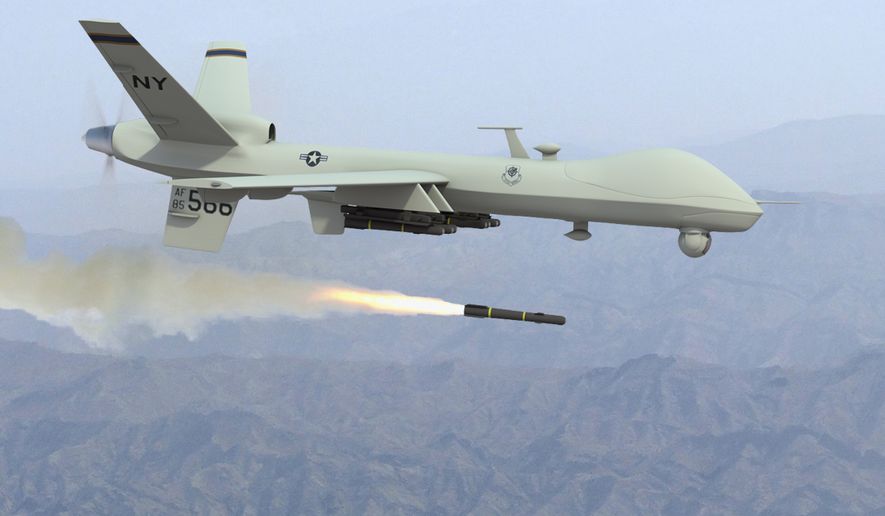SALT LAKE CITY (AP) — Today, when U.S. intelligence agencies believe they know the location of a terrorist in Pakistan and a few other countries, they are largely free to deploy a weapon that’s become the symbol of war on terror: an aerial drone.
The drone drops a bomb or fires a missile that executes the suspect.
University of Utah law professor Amos Guiora is pushing for another step before the U.S. government or military could decide to kill a terror suspect with a drone.
In a proposal to be published in 2015, Guiora and a colleague are pushing for what they call a “drone court.”
The court would be part of the judiciary branch and hear arguments for why the United States should target a suspect with a drone strike. A lawyer from the government would make an argument to a judge.
“The idea here is to create a robust judicial review of the executive branch,” Guiora said, “and the best way to do that is indeed with the court we are recommending.”
An opposing lawyer would represent the suspect, or suspects, in absentia. If the judge believes the government has met its burden, it would approve the drone strike.
The idea of a drone court has been raised before and has its critics.
Neal K. Katyal, a professor of national security law at Georgetown University and a former acting solicitor general, advised against the court in a 2013 opinion column in The New York Times.
“It is hard to think of something less suitable for a federal judge to rule on,” Katyal wrote, “than the fast-moving and protean nature of targeting decisions.”
He proposed an alternative: a national security court housed within the executive branch.
But Guiora said an executive branch court wouldn’t provide enough oversight and separation of powers. He also rejects the argument that finding a terrorist and taking action creates too dynamic a situation for a protocol like the drone court.
Guiora paraphrased an Israeli Supreme Court decision on targeting terror suspects: “Logistical burdens of state should not be posed on individuals.”
The proposal by Guiora and University of San Francisco Law Professor Jeffrey Brand also advises against creating a court similar to the Foreign Intelligence Surveillance Court, which approves warrants for wiretaps and digital collection by the National Security Agency and the FBI. That court, in which there is no one representing the subject of the warrant and the burden of proof is low, has proven to be too biased in favor of the government, the law professors argue.
Guiora has firsthand experience deciding what should be done with terror suspects. He served for 19 years in the Israel Defense Forces. Part of that time was spent as a judge-advocate general reviewing plans to kill terror suspects or combatants and determining whether the circumstances met the criteria for targeted execution.
Guiora said his and Brand’s suggestions are inspired by the Israeli principle of robust judicial review. Guiori said he and Brand have created only a framework for a drone court and want to participate with policymakers in crafting the details.
The drone court would apply only to planned attacks by drones against terror suspects. A missile attack from an F-16 or deploying soldiers like the raid that killed Osama Bin Laden would not be subject to the same review.
Guiora said he and Brand are focusing on drones because they seem to be the future of warfare.
Guiora said he has heard from former military lawyers who support the drone court.
“It tells me that people who have really been there understand what happens when there’s unrestrained executive power,” Guiora said.
Ultimately, it would be up to Congress to create the drone court.
The proposal will be printed in a book, “The Legitimacy of Drones,” edited by Steven J. Barela, to be published in 2015 by Ashgate Publishing.
___
Information from: The Salt Lake Tribune, https://www.sltrib.com




Please read our comment policy before commenting.